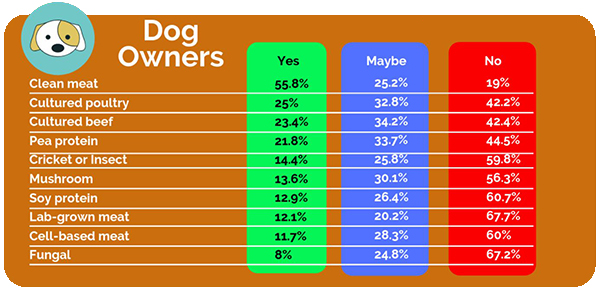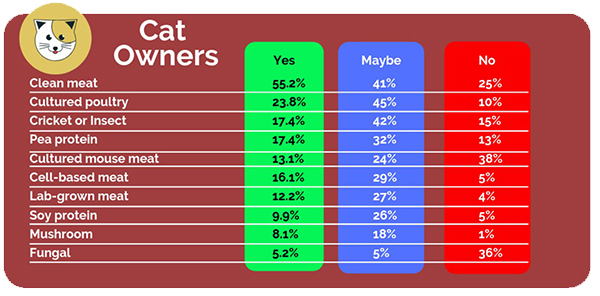OCEAN ISLE, N.C. — Pet owners and veterinarians in the US are not on the same page when it comes to buying into pet food ingredient claims, according to an annual survey conducted by the Association for Pet Obesity Prevention (APOP). Among veterinarians and pet owners with dogs and cats, grain-free diets, low-glycemic dog foods and raw pet diets received mixed reviews concerning their alleged health benefits.
The survey revealed 40% of dog owners and 45% of cat owners believe grain-free diets are healthy for their pet, while only 13% of dog-owning veterinarians and 15% of cat-owning veterinarians agreed. In fact, most veterinarians (69% of dog-owning and 71% of cat-owning) reported they do not think grain-free diets are healthy for pets, and nearly a third overall reported they are unsure.
As for low-glycemic dog diets, 27% of dog owners and 20% of veterinarians said they believe they are healthier, while 9% of pet owners and 38% of veterinarians said they do not believe they are healthier and just over 6% of pet owners and 41% of veterinarians reported they are unsure.
Raw meat diets are frequently marketed to be healthier and more biologically appropriate diets for companion animals. However, only 3% of veterinarians believe this is true. A large majority (85%) of veterinary professionals said they do not believe raw meat diets are healthier for pets, with 10% saying they are unsure.
On the other hand, 29% of dog owners and 21% of cat owners said they think raw meat diets are healthier, 30% of dog owners and 36% of cat owners disagreed, and 39% of dog owners and 41% of cat owners said they are unsure.
According to APOP, 73% of dog owners and 88% of cat owners reported never feeding their pets a raw meat diet. Most pet owners (78% of dog owners and 82% of cat owners) surveyed said they feed their pets a dry kibble diet either exclusively or most of the time, while wet foods were fed exclusively by 4% of dog owners and 8% of cat owners.
The survey also gauged which alternative proteins pet owners were willing to consider feeding to their pet, from cultured meats to insect and fungal proteins.
 The influence of other formulation claims, such as “free-from,” “non-GMO,” “organic” and “made in the USA,” were also noticeably disparate between pet owners and veterinary professionals’ purchase decisions, according to the survey.
The influence of other formulation claims, such as “free-from,” “non-GMO,” “organic” and “made in the USA,” were also noticeably disparate between pet owners and veterinary professionals’ purchase decisions, according to the survey.
For example, 45% of pet owners said they are influenced by the “corn and soy free” claim, while only 10% of veterinarians agreed. “No byproducts” claims pique the interest of 42% of pet owners and only 15% of veterinarians, and “non-GMO” claims appeal to 26% of pet owners and just 5% of veterinarians.
Pet foods with “organic” ingredient claims are influential to 29% of pet owners and 5% of veterinary professionals, the inclusion of “pasture or wild-caught meats” is important to 27% of pet owners and 4% of veterinarians, and pet foods formulated with “cage-free chicken or eggs” interested 18% of pet owners and 1% of veterinarians.
A portion of pet owners (41%) and veterinary professionals (25%) surveyed agreed that pet food “sourced and made in the USA” is a persuasive claim.
The survey indicated the purchasing decisions of 24% of pet owners and 38% of veterinary professionals are not influenced by pet food claims.
The survey also detailed how pet owners and veterinarians purchased their pet foods over the past year. Overall, 33% of pet owners said they had purchased from online stores, another 33% from a specialty pet store, 28% from a big chain store, 20% from a grocery store and 12% from a veterinary clinic.
Veterinarians predominantly purchased their pet food at a veterinary clinic (52%), while 31% purchased from online stores, 28% from pet specialty stores, 19% from big chain stores and just 8% from grocery stores.
The survey was conducted online by the Association for Pet Obesity Prevention between Oct. 12 and Dec. 31, 2018 and included 1,156 pet owners and 574 veterinarians in the US.
Find more articles related to pet food and treats on the Pet Food Processing landing page.



